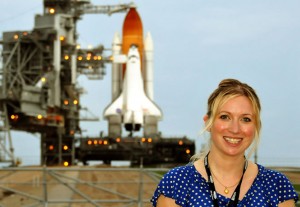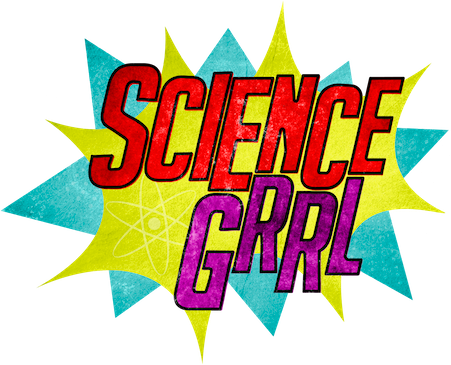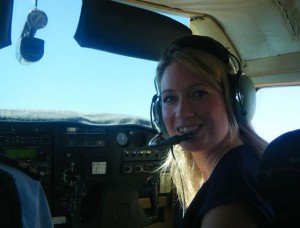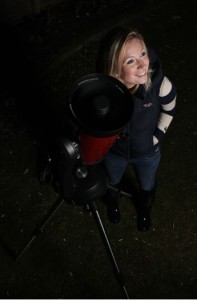Exploring the world through science and travel
I’m Sarah Cruddas. Sometimes you can love science, but not be cut out to be a scientist. That’s exactly my issue. I have a degree in Physics with Astrophysics, a post-graduate qualification in Broadcast Journalism and now work as a reporter and presenter on TV, radio and print. It’s certainly not the future I envisioned. I had always genuinely wanted to be an astronaut or at the very least work in space science.
I had been fascinated with science from a young age – I taught myself an extra GCSE in astronomy, had the telescope, the chemistry set etc. I won the Young Scientists 2000 awards, where as a shy teenager I stood in front of an audience of hundreds explaining elements are created in stars under the guise of what I thought was creatively titled ‘Where do babies come from?’.
Moving from science into journalism
Yet life didn’t take me down the path I expected. While studying for my undergraduate degree at the University of Leicester, my love of science was matched and then surpassed by a new-found love of travel. I would swan off with little money or fear to other parts of the world. For a young adult who had grown up in Hull, it was life-changing to find myself in place such as Uruguay or the favelas in Brazil. Travel changed my view of the world and I found myself wanted to share with people what I had seen.
So while studying, I managing to blag work experience at my local BBC Radio station, then local TV. Before long I was studying a postgrad in journalism, while working part-time at Radio 1. I wanted to tell stories. Science was now far from my mind.
And then into science journalism!
Around two years after graduating I ended up with a staff job as a local weather girl for the BBC. Suddenly I remembered that science degree and how much excitement it caused my employers to be able to say they had hired a girl who was a scientist and could present. Although weather forecasting at a local level, didn’t allow for a huge amount of science, it reignited my love for the subject. I found myself battling to try to tell science stories on top of talking about the weather.
Frustrated with my career, in 2011 I flew myself to Florida for the final space shuttle launch and landing. My media accreditation got me access to the NASA press room and I was able to sell back coverage as a reporter to the BBC. Breakthrough!
 A few months after returning, I became a Science Correspondent, based in Salford for the BBC. Then, yet again, I took a risk, leaving to head for London and freelancing.
A few months after returning, I became a Science Correspondent, based in Salford for the BBC. Then, yet again, I took a risk, leaving to head for London and freelancing.
Science and travel – both exploring our world
Sometimes I toy with going back to university and studying a PhD, but I know that’s not my path. My career allows me to indulge my love of travel with talking about science. In the past year I have headed to the Arctic, Tibet, China, Australia, Europe and l have even found myself on a speedboat to North Korea. To me, science and travel go hand in hand – both are about facing an unknown and exploration. Being freelance means I have had the chance to try my hand at everything from appearing on kids TV, to harder news programmes such as Channel 4 News as well as presenting on BBC Radio 4.
I love being able to see so many aspects of science, speak to the scientist involved and then communicate their message to a much larger audience, inspiring others to care about science. Told in the right way science is for everyone, as the ScienceGrrl motto says!
Science is shaping our world, from the materials in your laptop/tablet/phone/whatever you are reading this on, to 3D operations, climate change and a new era of space exploration. Understanding all of this enhances an audience’s life, in the same way that knowing more about any other aspect of the news enhances our understanding of the world. Here are some of my recent stories:
- China landing on the Moon – Channel 4 News
- 270m asteroid “near miss” for Earth – Sky News
- NASA to develop service stations for satellites – Wired
- Science of Landmines – Sunday Times
- Geothermal Power in East Africa – New Scientist
Encouraging girls into science
Part of what I do involves talking to young girls in schools and colleges about my work. I have been a STEM ambassador since 2009. I always try is to encourage them not to do what I have done – we need more scientists, not science journalists! My role in telling the science story is important, but the scientists are the visionaries who are shaping our future.
I also want to show people that you don’t have to fit into a typical ‘mould’ to love science. One frustrating thing I have learnt from my career is the media can sometimes typecast people who do science, particularly girls. I have lost count of the number of times someone has said to me “But you don’t look like a scientist”. What exactly is a scientist meant to look like?! Though I do think this is beginning to change.
In the future, I want to continue telling great science stories. Which is why I think the work of ScienceGrrl is so great, helping to showcase the work of great female scientists and inspire the next generation.
Sarah Cruddas
my blog: http://sarahcruddas.com/category/blog/
follow me on twitter: @SarahCruddas


